Here are a couple of natives, Callicarpa americana (Beautyberry) and Gaillardia x grandiflora 'Goblin'. The Callicarpa is a water lover and is very good at letting me know when it is thirsty, but despite this it seems to be doing well. Gaillardia grows in the sand dunes, so its toughness is built in.
The couple below seem well suited for each other. Zinnia marylandica 'Zahara Double Fire' has Mexican genes and the Portulaca is native to a broad swath of the globe from the Mediterranean, through the Middle East and into India.
Though the common name for Pseudogynoxys chenopodioides is Mexican flame vine, it is actually native to Columbia. Listed as a zone 9 plant, Pseudogynoxys is treated as an annual, but in our area it has proven root hardy in the past few winters. I can see a thick layer of mulch in its future.
I'll continue with the Latin American entries. Here is Salvia guaranitica ' Black and Blue' followed by the annual Stachytarpheta mutabilis (porterweed). Both of these plants are humming bird attractors, but despite what you read about red flowers, they go to 'Black and Blue' first.
I am happy to show you Leonotis leonorus, lion's ear or lion's tail. I have coveted this since I first saw it bloom and just assumed it would be an annual, but was thrilled to find it is perennial here. Leonotis has a long list of medicinal uses, as well as being considered a substitute for marijuana. I do not need to smoke it, looking at it makes me happy enough. I just hope the neighborhood stoners don't find out, and if they do I wish them the plants other affects of dizziness, nausea and vomiting.
Abelmoschus manihot is member of the okra family from the Chinese side. It is an annual for us, but it seeds around freely. I usually crush up the spent seed pods and sprinkle them over the garden during a late fall clean up.
Finally, nothing says September in the garden like the long-lived, old favorite Lycoris radiata, spider or hurricane lily. This Asian native has had no trouble acclimating to our climate or being accepted by gardeners.
Before we leave I want to apologize to my fellow bloggers for not being able to make the rounds and see what you have been up to. I have been crazy busy and school is also back in session, so blogging has to take a back seat to my son's homework and my wife's lesson plans. I know one blog I need to visit is Carol's at May Dreams Gardens, after all it is Garden Bloggers Bloom Day.
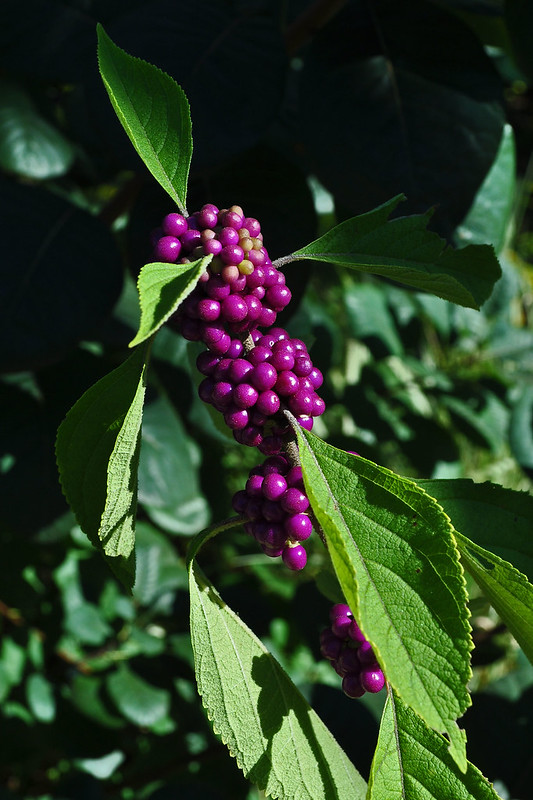
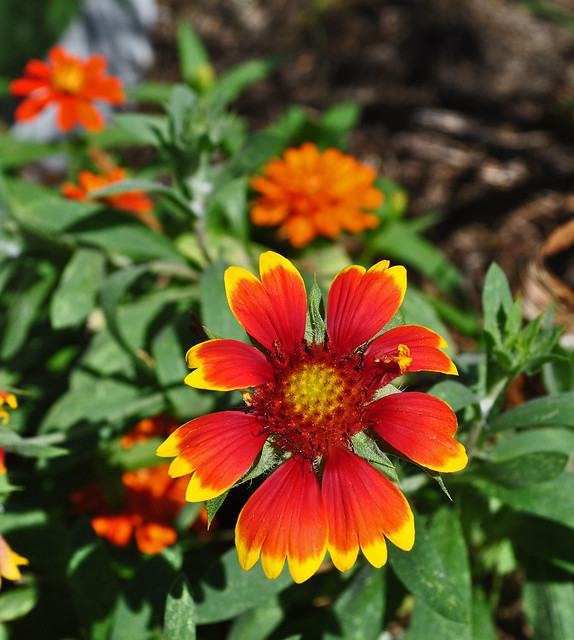
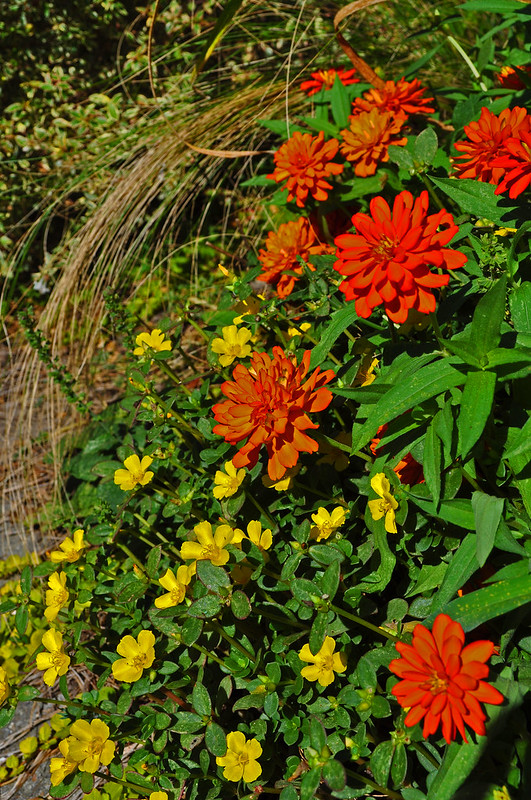

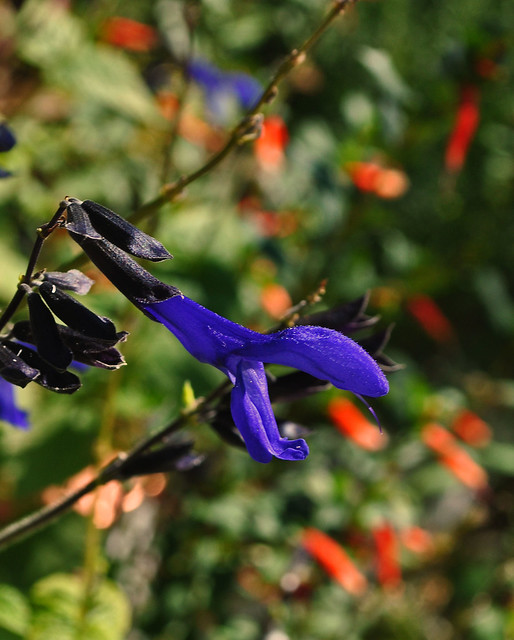

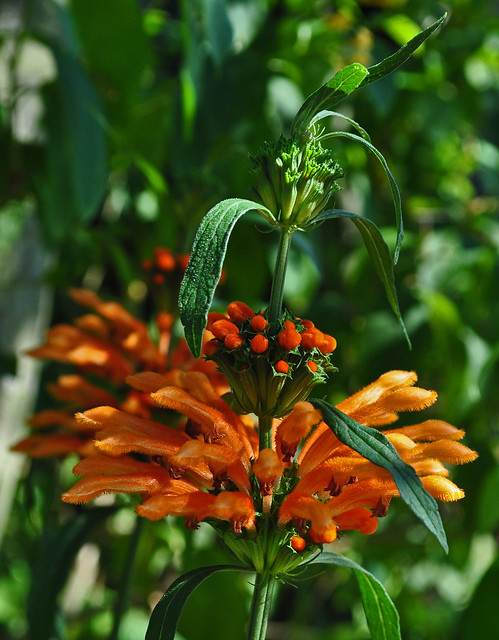
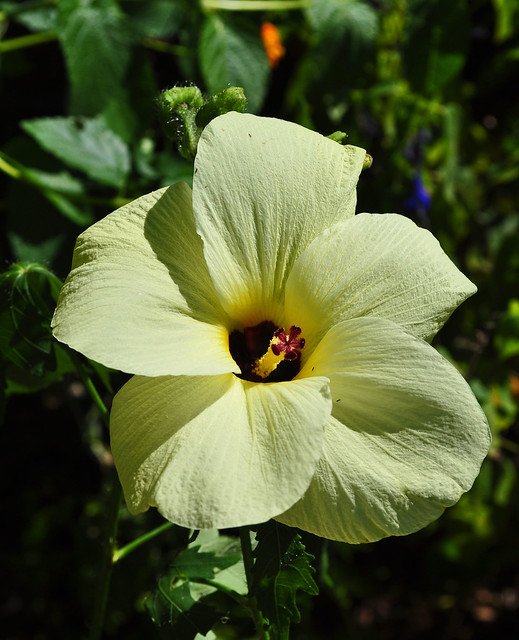





I might have thought that I was looking at a southern garden with the familiar flame vine, lion's tail and many others. I have failed to have success with those two where other of my friends have. They are beauties as well as the American beautyberry. But Lycoris is really one of my favorites yet to show its colors this year. Happy bloom day to you.
ReplyDeleteWell you are looking at a southern garden, maybe not Texas southern but definitely in the south. This is my first year with both the flame vine and lion's tail. We will see how the winter treats them.
DeleteBeautiful plants and photos as always. And as always I learned some important info, namely about where gaillardia normally grow and about blue salvias. Thanks!
ReplyDeleteBoth of those plants are on the only slope I own, so this may have something to do with their better drainage.
DeleteI don't envy you riding herd on homework assignments. Sorry to hear about the lack of rain. It's always dispiriting to post when the garden is stressed, but so much valuable information comes from notes on the survivors. You've got some beauties.
ReplyDeleteDenise, thanks for stopping by. We did not some life support rain last night, but I need still more.
DeleteNot sure which I love more the Lycoris radiata or Abelmoschus manihot...both are hot!
ReplyDeleteThe traditionalist in me votes the Lycoris.
DeleteBeautiful photos Les , as always...I have never tried Lycoris, I really ought to-yours are wonderful. Happy Bloomday and here's hoping your life settles in a bit !
ReplyDeleteI don't know how Lycoris would do in your climate, but it would be worth a try. It sends up foliage only in spring, goes dormant in summer, sends up flower spikes only in Sept. and then dormant again for winter.
DeleteThat Lycoris radiata takes me way back to Mississippi. My mother always had it popping up through the grass like magic.
ReplyDeleteI have heard it referred to as Magic Lily, along with Hurricane Lily and Surprise Lily.
DeleteWe visited the Botanical Garden last week hoping to find you there to say hello, etc. You may have been there but I was surprised when I asked at the visitor center and the volunteers there seemed to draw a blank....didn't seem to know about the blog....so we just enjoyed the gardens, especially the butterfly garden, and figured I'd do a little bit better planning next time I am in the area and try again then.
ReplyDeleteI hope you enjoyed your visit, and I am sorry our paths did not cross. I am not surprise about the front desk not knowing anything about my blog. I do try to keep a little separation my job and my personal blog, though that separation is kind of loose.
DeleteLovely photos in spite of the lack of rain. I didn't know about the black and blue attracting hummers.
ReplyDeleteYou always here about red flowers and humming birds, but they love this one. I am sure it would only be an annual for you.
DeleteOh my, I thought that Beautyberry was gorgeous enough but then I saw the Hurricane Lily. I'm loving those two plants, unfortunately I doubt anything so beautiful has a hope of surviving a coastal scottish highland summer never mind a winter.
ReplyDeleteThank you for sharing :)
Linda, thanks for crossing the ocean to take a peek at my garden. I am not sure how these plants would do for you. I don't think your winters would cause either to suffer, but the summers may not be quite warm enough.
DeleteHappy GBBD - fabulous bright colors! Best of luck to your family transitioning into the new school year.
ReplyDeleteThanks Sarah. So far things are going well.
DeleteThat is what is blooming in my garden, here in Alabama.
ReplyDeleteThanks for stopping by Janie. I will come take a look.
DeleteAs weather patterns become more extreme and bizarre, it will make sense to plant what does best in those conditions. Salvia 'Black and Blue' is a hummingbird magnet in my garden too and lasts until hard frost. I always make sure I plant a few of them so even the late migrators have something to eat.
ReplyDeleteSue, we are fortunate that it survives our winters here. In fact, it can be a bit of a thug and needs corralling every so often.
DeleteFor being in the middle of a dust bowl, your blooms are vibrant and healthy. I worry because your weather seems to visit us a couple of days later. I'd better get out the garden hose.
ReplyDeleteWell we did get some rain last night, but I don't know if it will be enough to last the week, given how dry everything was to begin with.
DeleteIts good to be busy. I understand your issues with maintenance in your own garden.
ReplyDeleteI agree, it is good to be busy.
Delete